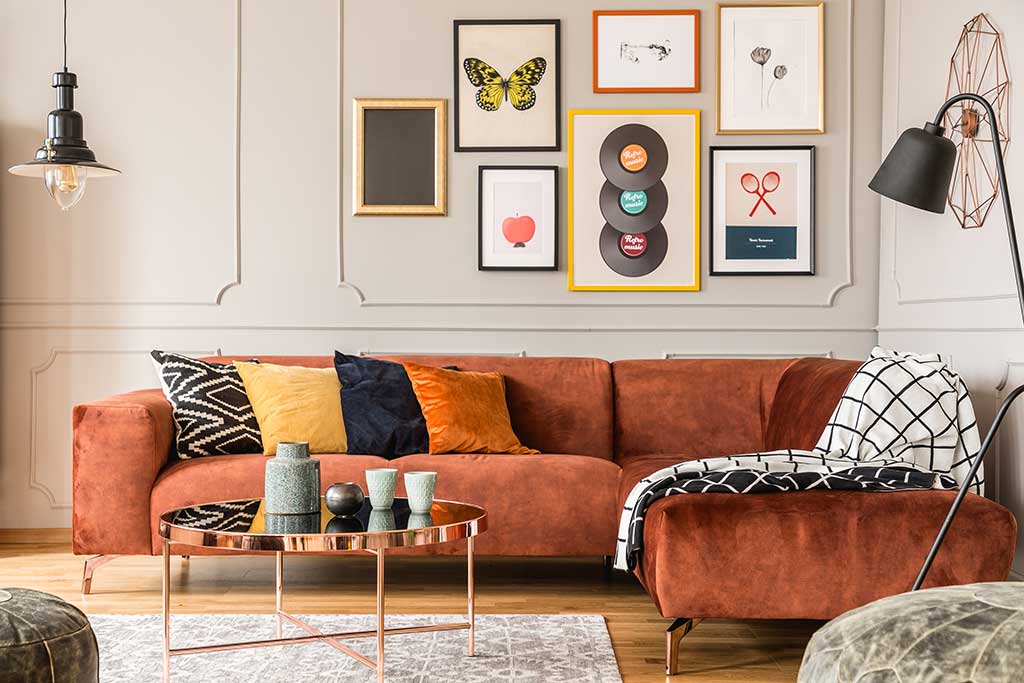Last updated July 2024
Great Picture Frames for Less
Any kind of art—from the Mona Lisa to your family snapshots—looks better in a nice frame. To elevate, protect, and display paintings, photos, and other prizes, you’ll either need to find a good shop to do the work or buy supplies and DIY.
Here’s info on how to get help. Many framing shops in the area have staff that provide expert advice, take care of your precious stuff, and don’t charge high prices. If you want to frame things yourself, online businesses offer products and instructions—or you can buy supplies from an arts and crafts store and watch online instructional videos for an assist on putting everything together.

Finding Shops That Score
If someone else will do the work, you want a skilled pro who offers sage advice. Staff at the best shops will spend time assisting you with framing options: Single or double mat? Metal or wood frame? Plexiglass or real glass? They should then produce a fine-looking final product.
Here at Checkbook.org, you’ll find customer reviews of local framing shops from our surveys of consumers. You’ll notice big shop-to-shop differences for customer satisfaction.
Avoiding a Big Bill
You can hire a local shop to do your framing, ship your stuff to an internet-based outfit, or do some or all of the work yourself.
DIY options usually cost the least. You can buy inexpensive premade frames at stores like Target, Pottery Barn, and IKEA. Don’t assume these frames will leave you with lousy-looking displays. “I do kid artwork walls for some of my clients, and cheaper frames like this are a great option,” says Allison Marvin, an art consultant whose Sightline firm helps people buy and mount art.
If you have odd-sized art or want customized frames and mats, several websites allow you to enter measurements and choose from hundreds of frames—plus buy custom-cut mats, glass or plexiglass fronts, and more. The store ships you the products and you assemble everything. In our experience, this is relatively simple but not totally goof-proof. Precise measuring is crucial. Plus, plexiglass panels we receive from online vendors can be coated with fuzz that’s a pain to remove, and perfectly positioning art onto precut mats can be harrowingly tedious. If you’re using a mat, buy linen mounting tape, an acid-free variation on masking tape that costs $10–$15 at art stores or online, to affix art to the mat.
If you want a full-service frame-up, many local stores can help. Also, full-service internet-based companies like Framebridge.com, PictureFrames.com, and SimplyFramed.com will supply tubes or other mailers for you to ship your artwork; they then frame the item and ship it back. If your image is a digital photo or print, the process is simpler: Email it to the company, which then sizes it, prints it, and sends you a framed version a few weeks later. Simply Framed, in particular, offers a wide range of suggestions tailored to very specific sorts of art and artifacts—aka a groovy Plexibox (also known as a shadowbox) for a textile or an Old Worldly gilt wooden frame for a classy oil painting.
One reason to stick with a local shop is that it’s easier to discuss your project and get advice in person. Another is that shipping your precious 1991 REM poster or your kid’s artwork means it might get lost.
Start by shopping around for a good price—you’ll find big differences from business to business.
Our undercover shoppers asked a sampling of local picture framing shops plus seven online outlets for their prices to frame two different pieces. The table at the end of this article reports the prices we were quoted along with prices for materials from companies that supply stuff for DIY framers.
For the larger piece, prices from surveyed full-service local shops ranged from $170 to $500 or more; for the smaller piece, prices ranged from $115 to $317.
As you can see, the web-based stores typically offered low prices. FrameItEasy.com’s prices were $67 for the smaller piece and $111 for the larger one—but keep in mind that you have to do the final assembly steps.

Materials and What They Mean
The types and quality of materials you choose when framing also matter.
Mats
Good brick-and-mortar or online framers should use acid- and lignin-free mats that won’t damage artwork over time. It’s probably more important to check on this sign of quality when buying from online outfits or when picking up an inexpensive premade frame; most pro framers use nothing but acid-free materials.
Why use a mat? “Its primary purpose is to create air between the glazing and the artwork,” says Mark Klostermeyer of the Professional Picture Framers Association. “The mat absorbs and dispels moisture, which can condense on your art and even sometimes cause mold.” Mats, whether single, double, or even placed behind the art (known as “floating”), also set off whatever you’re framing, enhancing the appearance of anything from a vintage postcard to a Rembrandt etching. With the floating styles, framers use spacers to create distance between the mat, the artwork, and the frame itself.
At a good frame shop, staffers should show you a range of colors of mats, placing them up against your artwork to see what looks best or what you prefer. In general, white or eggshell tones let the art, not a trendy mat color, shine. Pros will also suggest mat widths that usually range from 1½ inches to more than four. “Or a wider, larger mat, like a snapshot in a 10-inch-deep mat, can make things feel more modern and significant,” says interior designer Nate Berkus. Double mats, while more expensive, can be used to further accent colors in the piece, usually via a top mat in a neutral hue (white, black) and an inner mat in another shade that draws out an element in the art.
Most online services let you upload an image of your artwork for this process, meaning you can play around with mat colors and sizes.
For some photos and posters, you might not want a mat. “You almost don’t need a frame, since many posters have printed borders,” says Berkus. Plus newer framing techniques make it safer. “It used to be that forgoing a mat meant smashing the work up against the glass, which could damage it,” says Marvin. “But now framers use spacers to keep the piece away from the glass, and it can look very modern and also not hurt the art.”
Frames
No, you don’t have to keep all the frames in your house (or even on one wall) the same style and color. Thanks to the gallery wall trend and the increasing eclecticism in home décor, a mishmash of materials and styles—white, golden, metal, straight or curvy wood—denotes a collection amassed over time (and might mask the fact that all the frames came from Target). In general, metal or plastic composites are cheaper; wood, particularly intricate or carved styles, can cost hundreds of dollars.
Choosing a frame style is a personal matter, but it should cue off the art, if possible. “A lighter-feeling piece, like a delicate work on paper, might just get a slim frame, whereas a chunky abstract painting probably needs a frame with more heft,” says Marvin.
Glass vs. Plexiglass vs. Nothing
If you’re framing an oil or acrylic painting, keep its surface uncovered and frame it without a glass or plexiglass front. That’s because the surface is durable and will show off the artist’s brushwork. But a watercolor needs a mat to protect it from smudging and wrinkling, and a glass or plexiglass front to protect it from dust, sunlight, and little fingers. A clear front also helps keep a work from warping and, frankly, helps it look important. Glass used to be the standard material, but it’s heavy and can break. “Many of my colleagues in San Francisco won’t even use it, because of earthquakes,” says Klostermeyer.
Both glass and plexi may filter out UV rays and reduce reflective glare. And there’s a wide range of glazing for both plexi and glass, ranging from simple UV protection to what pros call “museum glass” that blocks nearly all light and glare.
For our money and trouble, plexiglass is the way to go. It’s more expensive than glass and more prone to scratches, but it’s a lot lighter and not fragile, making it easier to hang.


